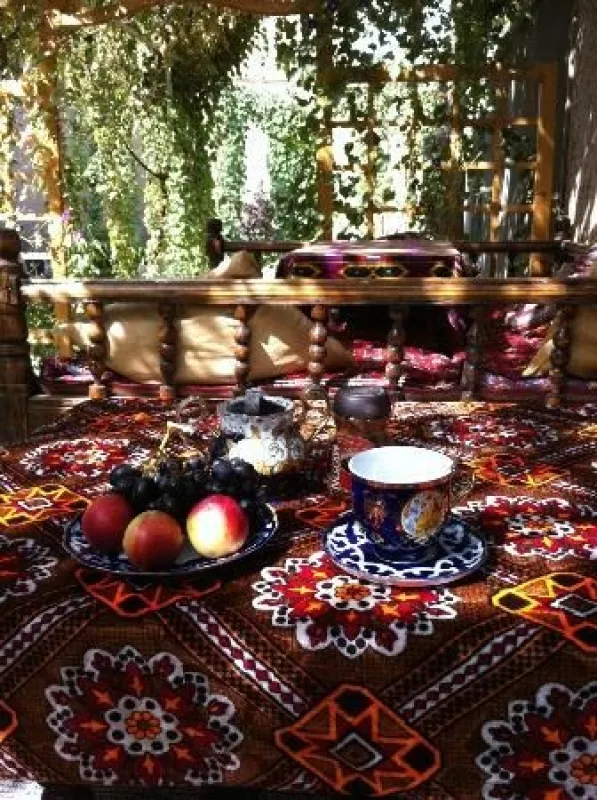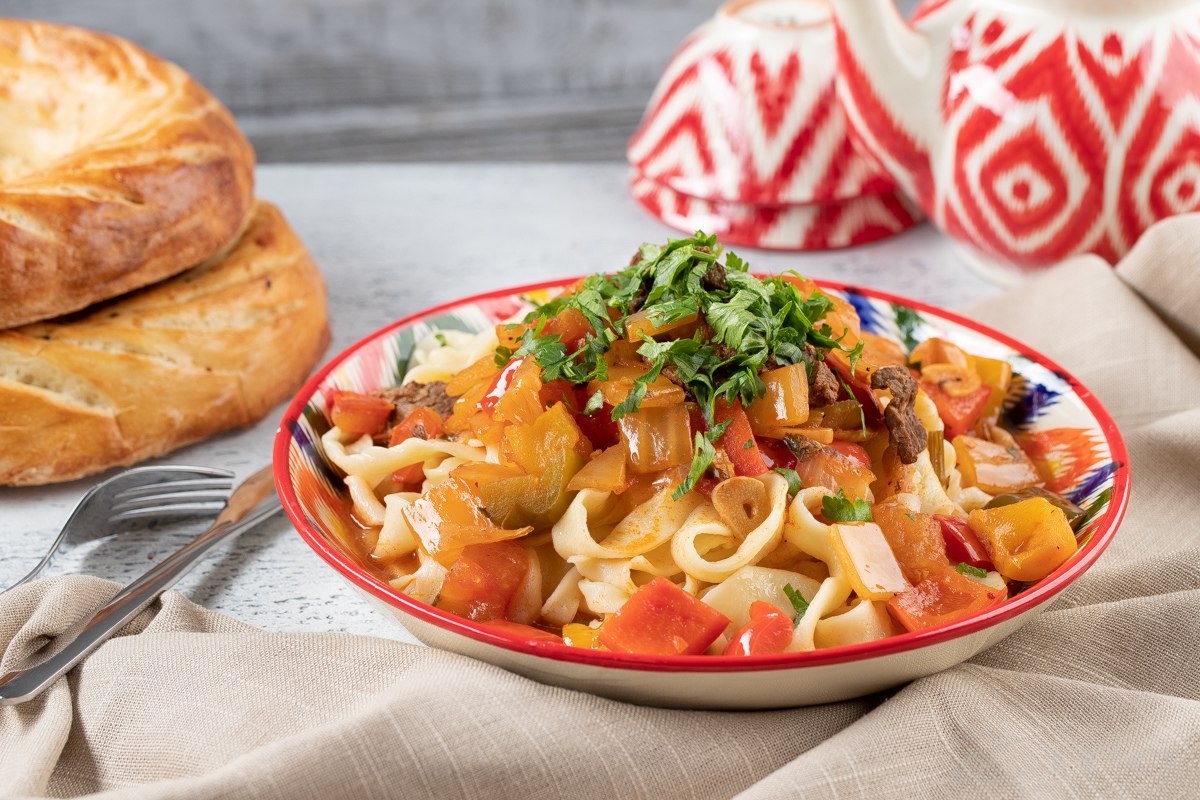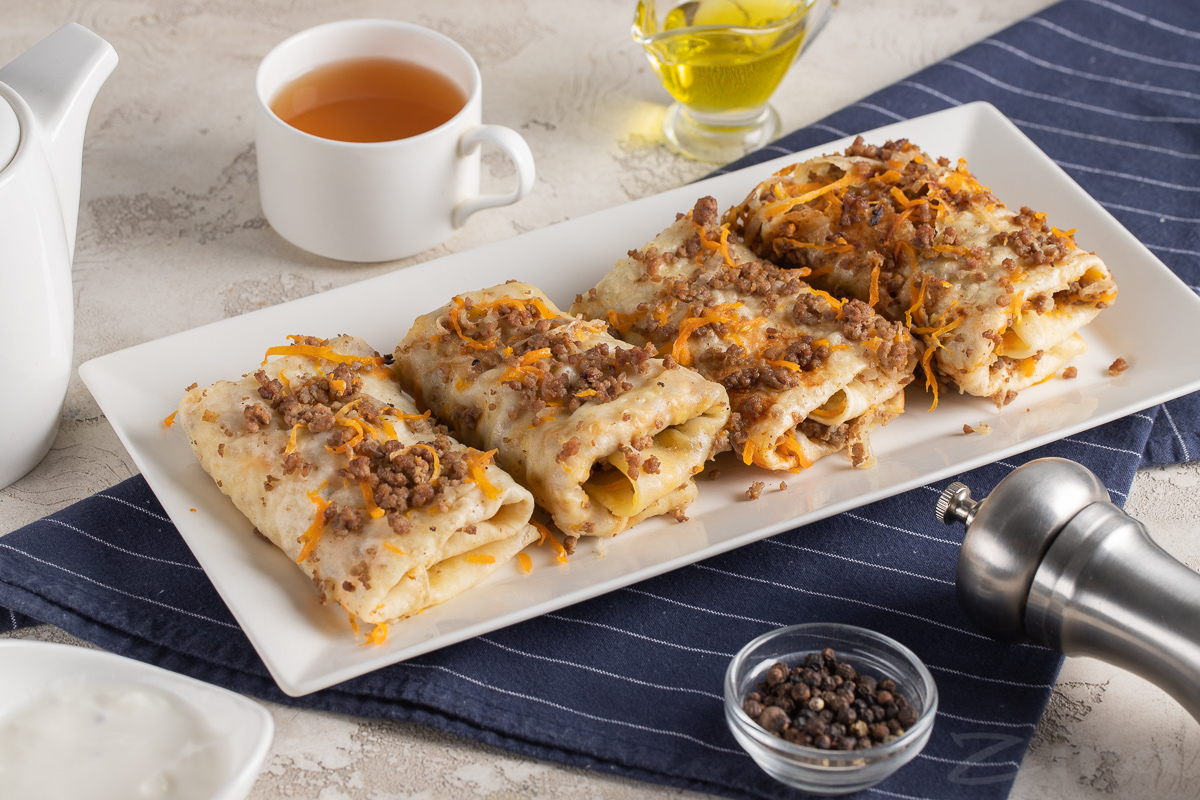

Description
Foods
cuisine
Steamed dumplings-Manti

Manti is a classic dish popular in the cuisines of Turkic and Muslim nations: the Caucasus, Turkey, Mongolia, Uzbekistan, and even China and Korea. In Russia and the post-Soviet region, manti is a very popular dish from the Central Asian republics of the former Soviet Union. The origin of the dish is still unknown. Many facts, including etymological evidence, indicate that this recipe originated in China and spread further along the Great Silk Road. Traditionally, manti is cooked in a special device called a manti cooker, manti cooker, manti pot or manti-kaskan. A manti pot is usually multi-layered. Water is poured into the lower chamber and the upper compartments have steam vents (lappays) that allow cooking. In a manti pot, you can cook 40 or more manti at a time. Depending on the ingredients, there are types of manti, such as kok manti, meat manti, pumpkin manti, mint manti and potato manti.
cuisine
Lagman

This lagman is typical of real Uzbek cuisine and originated in very ancient times. It is very rich and delicious, and it is a dish that is worth putting on the table of guests. It can be prepared in all four seasons of the year. This type of lagmon is mostly prepared in the Fergana Valley. The preparation of cut lagmon is as follows: the dough is made as if it were made for dumplings, let it rest, and then spread it to 2-3 mm with the help of a rolling pin. Cut long strips of 4-5 mm width after laying the dough, and wrap them in a roll so that they donʻt stick together. The cut ugar is boiled in boiling salted water, and when it floats to the surface, it is floated in a pan, rinsed 2-3 times in cold water, and then drained. Cabbage is prepared as follows: cut onion into rings, meat into almond-sized chunks, tomatoes into slices, medium potatoes (1.5 X 1.5 X 1.5 cm), radish into small ( 0.5 X 0.5 X 0.5 cm) is cut into cubes, cabbage, sweet garlic and garlic are finely chopped. In the cauldron, oil is added to the onion, meat is added before it is browned, and when it begins to sizzle, add tomatoes and garlic until the tomatoes are crushed and sizzled. Tomatoes can be used instead of tomatoes in winter. Then add radish, sweet garlic and cabbage and fry until half-cooked, add a little water and simmer on low heat until all the ingredients are completely soft. When the water evaporates, each ingredient is boiled until completely soft. Add a little hot water if it becomes too watery. Adjust the salt and pepper. It is necessary to pay attention to the fact that the cabbage is not too liquid or too thick, but average. When ready to serve, cook the noodles in boiling water and heat them, put them on a plate in one layer, put cabbage on the second layer, put the third layer of noodles on top of it, and put the cabbage on the fourth layer, sprinkle with chopped scallions.
Desert
Yupka

Yupka is a dish made from dough, meat and onions. The meat is passed through a meat grinder, mixed with finely chopped onion and pepper and fried. 30 g balls are made from the dough and rolled out thinly. Apply half a spoonful of oil to a hot pot and cook one of the doughs, soaking them well on both sides. Then put the second Yu. in the pot and cook it, leave it in the pot, spread the prepared minced meat evenly on the surface, and cover the first cooked one. The next layer of dough is covered with minced meat and turned over for cooking. The number of floors will thus be increased to 10-12. Then each one is separated and placed on a plate in four folds. In some places, the dough of Yu. It is necessary to cook Yu. on a very slow fire and if necessary, drop half a spoonful of oil into the pot. Yu. It is one of the traditional dishes, and it is prepared at the cradle of the baby and during Eid ceremonies.
Conveniences
- Wi-Fi available
- Public transport
- Street parking
- Family friendly
- Air conditioning
- Heating system
- Popular places
- Garden
- Tandoor
- Tapchan

 English
English O'zbek
O'zbek Русский
Русский